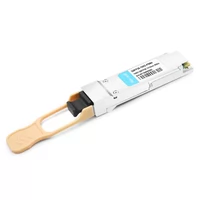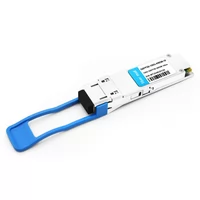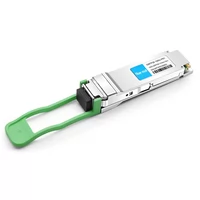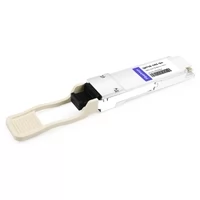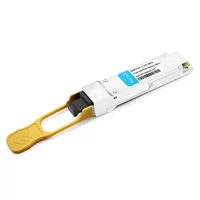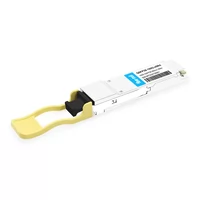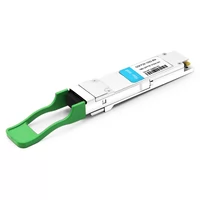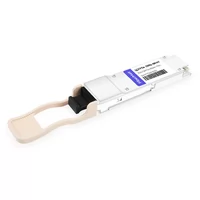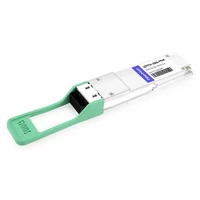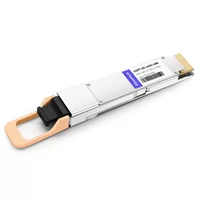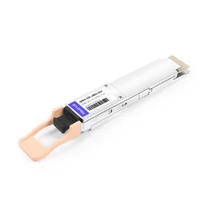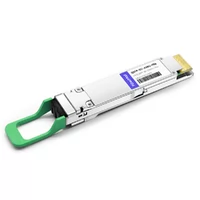As the world of high-speed data communications changes rapidly, it is important to know the differences between different types of transceivers in order to make the best use of networks. This article looks specifically at QSFP28, QSFP56, and QSFP-DD optical solutions, including what they do, where they are used, and their benefits. By explaining these differences we hope our readers will be better equipped when choosing technology that meets both bandwidth requirements as well as operational needs for efficient and dependable data transmission within current network infrastructures.
Table of Contents
ToggleWhat are the Features of QSFP28?
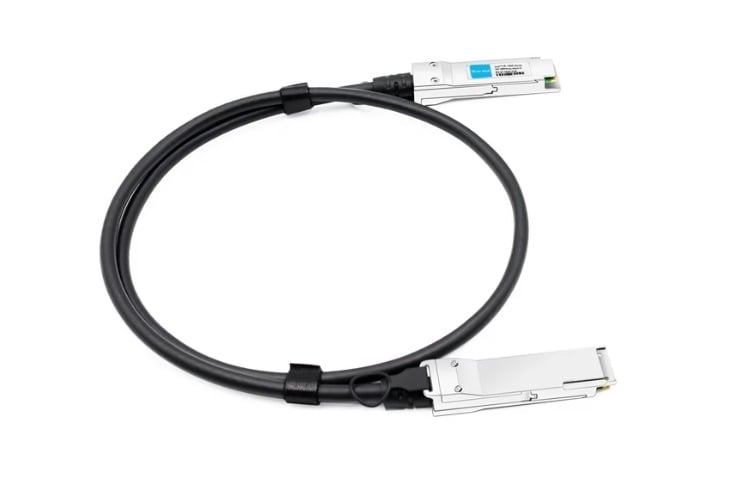
Key Features of QSFP28 Transceivers
- Bandwidth Capacity: QSFP28 transceivers can support a bandwidth of up to 100 Gbps per port, which helps in high-throughput data transmission.
- Form Factor: The QSFP28 uses a compact form factor that allows for high density deployments in switches and routers.
- Transmission Distance: Depending on the type of optical cable used, transmission distances achievable by QSFPS are between 100 meters to over 10 kilometers.
- Wavelength: For multimode applications, they operate at a wavelength of 850 nm while single-mode applications use wavelengths around 1310 nm making them compatible with different types of optical fibers.
- Compatibility: In addition to being backward compatible with both QSFP+ and SFP+ modules, this increases flexibility when designing networks using these components.
- Power Consumption: These transceivers have an average power consumption rate as low as about three point five watts per port thus making it more distinct from other standards like qsfp-dd or qsfp56.
Common Uses of QSFP28 in Data Centers
- High-density data transmission: QSFP28 transceivers are often used in data centers to provide high-density interconnects and allow efficient server aggregation and switch connection bandwidth utilization.
- Cloud Computing Infrastructure: These transceivers can meet the high demands for bandwidth that cloud computing environments require, allowing fast movement of data between distributed networks.
- High-Performance Computing (HPC): In HPC setups where real-time processing and heavy applications take place, QSFP28 is essential as it provides the required throughput.
- Data Center Interconnects (DCI): They are applied to connect several data centers together for consistent long-range transfers at high speed.
- Virtualized Network Environments: The flow of virtual machine traffic is optimized by this technology in virtualized data centers thus enhancing performance on dynamic workloads.
- Machine Learning and AI Applications : Communication speed is critical in ML & AI workloads within a DC therefore large volume transfers become possible with QSF28.
QSFP28 Form Factor and Compatibility
The Quad Small Form-factor Pluggable 28 (QSFP28) transceiver is small in size but can send four channels at a speed of 25 Gbps each, which equals to 100 Gbps bandwidth for a single port. This small design allows for very high-density installations where many ports can fit into just one standard 1U rack. It connects easily with regular QSFP+ and SFP+ transceivers that are backward compatible; this means network engineers do not need to replace everything when they want their systems to be scalable or flexible. Networks constantly change, hence the importance of this compatibility, which ensures older technologies work alongside newer ones, thus maximizing total investments made on them.
What is QSFP56, and How Does it Compare to QSFP28?
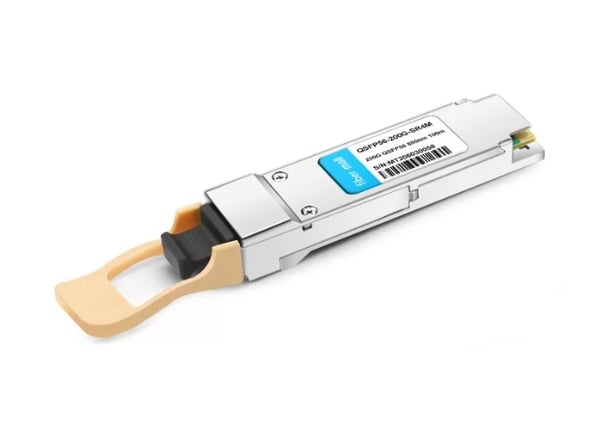
Comparative Analysis of Data Rate and Bandwidth
The maximum throughput for the QSFP56 transceiver is double that of its predecessor, the QSFP28. This improvement in data rates results from using two channels at 50 Gbps each instead of four channels at 25 Gbps for a total of 100 Gbps. Applications such as high-frequency trading, large-scale cloud computing, and advanced analytics are benefitted by this better accommodation for growing bandwidth demands within modern data center environments among others. As both transceivers have similar physical form factors, next-generation networking requirements prefer more suitable choices with higher bandwidth capabilities like the QSFP56.
Power Consumption Differences Explained
Due to its increased data throughput capabilities, the power consumption profile exhibited by the QSFP56 transceiver is above that of the QSFP28. Usually operating within a range of three point five to four watts per port or seven to eight watts per port, respectively, can be attributed to this difference in power consumption levels between them, which acts as vital considerations for data center operators who must ensure effective thermal management coupled with supply planning able accommodate modern high-bandwidth applications’ needs among other things while balancing performance efficiency so as not only optimize costs but also maintain robust networks particularly during debates involving energy use efficiency versus operational excellence across different facilities where these devices might be used.
Differences in Form Factor and Module Design
As they follow Quad Small Form-factor Pluggable (QSFP) specifications regarding their physical form factor, both modules are compatible, allowing easy integration into the current network infrastructure without requiring any additional hardware alterations. On the contrary,the QSPF56 module supports higher-density applications due to its incorporation of optical technology advancements, which result in improved performance metrics compared to earlier versions. Electrical configuration interfaces and component optimization designed for faster transmission rate are some key differences found in modules between these two types of connectors used in telecommunication systems today.
Why Use QSFP56 in Your Network?
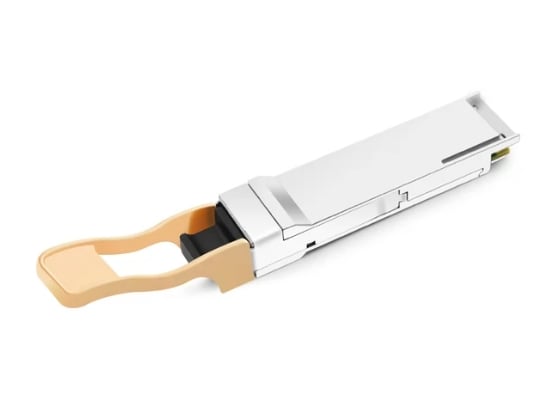
Advantages of QSFP56 in High-Speed Networks
For high-speed network deployments, the QSFP56 transceiver has a number of important benefits. First, it is able to support data rates up to 200 Gbps and allows for the efficient transfer of larger amounts of information, which is essential for data analytics applications, cloud computing, or high-frequency trading. Second, with higher per-port bandwidths, total ports are needed within a network, which simplifies its architecture while taking less physical space overall. In addition to this, advanced modulation techniques employed by the QSFP56, along with error correction capabilities, improve signal integrity and make it more resistant to interference, thus ensuring reliable communication over long distances. Also, as demand on networks continues increasing, there is no need for major rewiring when using these devices because they were designed with future-proofing in mind, making them an ideal choice for businesses wanting to scale their infrastructure.
Future-Proofing With QSFP56 Transceivers
The evolution of modern data networks has been taken into consideration when designing the QSFP56 transceiver. It can transmit at speeds up to 200 Gbps, which makes it compatible with next-generation applications, therefore reducing the chances that it will become obsolete compared to other similar devices such as the qsfpdd. These modules are easy to upgrade and fit into current systems without causing too much disruption since they have a modular design, allowing gradual shifts towards higher capacities. Moreover, compliance with industry standards guarantees compatibility across diverse network environments, further establishing its position as an effective solution for long-term high-speed connectivity provision. By investing in these types of transceivers, organizations not only obtain current performance but also ensure there is room for growth based on differences between different models like qsfpdd vs qsfp.
Fitting Into Existing Infrastructure
The design of the QSFP56 transceiver ensures that integration into pre-existing network infrastructures is seamless. Various hardware, including switches, routers, and servers, can all work together thanks to this device meeting established standards. During upgrades, users won’t experience any problems because previous versions were supported, thus providing backward compatibility capabilities necessary for legacy systems support. Installation does not require extensive modifications; hence, quick deployment becomes possible under user-friendly conditions applicable even within basic setups. Therefore companies attain operational continuity while improving their networks’ efficiency.
QSFP28 vs. QSFP-DD: A Comparison
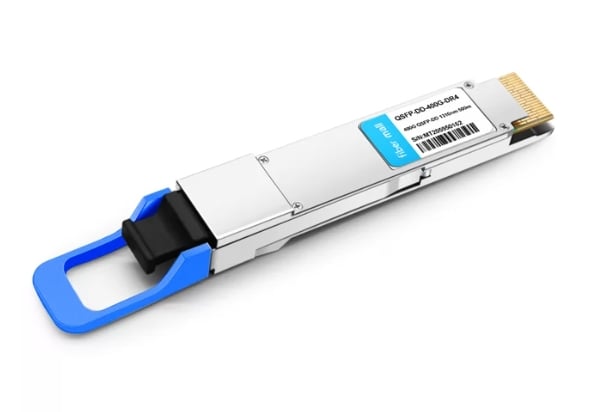
Overview of the QSFP-DD
The Quad Small Form-factor Pluggable Double Density (QSFP-DD) is a high-speed transceiver format that can transmit data at rates up to 400 Gbps. With its double-density connector, it enables more ports per unit area while still being similar in size to the QSFP28. This is one of the main differences between these two models. Additionally, it provides improved bandwidth capabilities, which address the ever-increasing demand for data in today’s modern data centers. In order to integrate easily into existing infrastructures, it also has backward compatibility with previous versions of QSFPs. For organizations that want their networking solutions to be future-proofed without sacrificing efficiency or performance levels, this flexible option should be considered.
Differences Between QSFP28 and QSFP-DD
The primary areas where QSFP28 and QSF-DD differ are related to data transfer speed, port density, and connector design features. While a maximum throughput rate of 100 Gbps is supported by the latter transceiver model alone, quadruple that number (up to 400Gbps) can be achieved using the former one which meets higher demands for bandwidth in current networks, among other things such as illustrating how fast something like “QFS56” works compared to its predecessor “QSFA28”. In comparison with their counterpart, standardized single-mode fiber connectors, used on both devices respectively, the double density connector used on a QSF DD allows more ports to fit into smaller physical spaces, thus increasing overall port density. Moreover, they have identical form factors, making it easy for users who upgrade from one device type to another without having any significant changes done within their infrastructure, so they should be seen as better long-term investment options by companies seeking optimal network performance improvements over time periods stretching beyond just months or years but possibly decades instead.
Use Cases for QSFP-DD
- Data Center Interconnects: QSFP-DD is perfect for high-bandwidth connections between data centers, allowing efficient data transfer in cloud computing.
- High-Performance Computing (HPC): HPC utilizes faster data rates through the use of QSFP-DD, which facilitates quick processing and analysis of large datasets.
- Telecommunications: The added bandwidth capabilities offered by QSFP-DD support telecom providers’ infrastructure needs, enabling high-speed connectivity with lower latency levels.
- Enterprise Networks: Network infrastructure upgrades can be made by businesses using QSFPSDD to benefit applications involving a lot of data throughput such as video conferencing or real time analytics..
- Storage Area Networks (SANs): Fast data transfers between storage systems and servers, optimizing performance within storage environments are all taken care of by the QSFPDD transceiver.
PAM4 Modulation on QSFP56 and QSFP28 – Impact
What is PAM4 Modulation?
PAM4 modulation, or four-level pulse amplitude modulation, is an advanced signaling scheme that allows for the transmission of two bits per symbol, doubling the data rate compared to traditional NRZ (Non-Return-to-Zero) signaling. PAM4 uses four different amplitude levels to efficiently encode information over a single channel which increases bandwidth and reduces power usage. This specific type of modulation is beneficial in high-speed communication applications such as QSFP56 and QSFP-DD transceivers, where it’s important to maximize data throughput while minimizing signal degradation.
How PAM4 Augments 200G QSFP56 &400G QSFP-DD Transceivers
By allowing increased data rates through multiple bits per symbol transmission, PAM4 modulation greatly enhances the performance of 200G QSFP56 and 400G QSFPSDD transceivers which are critical in today’s fast-paced networks. For high-demand applications, these optical transceivers have to achieve higher bandwidths while preserving signal integrity. The 400G QSFP-DD with PAM4 doubles its conventional NRZ systems’ data rate via its four-level amplitude system, facilitating more efficient power-reduced consumption, extended distances, less signal degradation, and increasing capacity across longer ranges, therefore satisfying evolving modern requirements for data center infrastructure support performance high networks.
Comparison With NRZ Modulation
The primary difference between PAM4 & NRZ lies in their efficiency regarding data transmission; however, they both differ when it comes to encoding bits – whereas one encodes just one bit per symbol (NRZ), the other one encodes two bits per symbol, thereby doubling its speed without increasing required bandwidth(PAM). When operating at greater speeds than what was originally intended, non-return-to-zero may become distorted due to power use which leads to distortion. On the contrary, better utilization of available bandwidth and improved signal-to-noise ratio make this an optimal choice for long-distance high-speed communications including those adhering strictly to IEEE8023bs standards like qsfp-dd msa standards, amongst others
Reference Sources
Frequently Asked Questions (FAQs)
Q: What are the differences of QSFP28 and QSFP56?
A: The difference between QSFP28 and QSFP56 is mainly its data rate. While it uses four lanes, each with a maximum capacity of 25 Gbps, the former can only go up to 100 Gbps. In contrast, this latter one can accommodate two times more speed by using those same four channels but operating at 50 Gbps per channel instead which gives you an overall throughput of about 200 Gbps. They share the same form factor but differ in their use of advanced technology like PAM4 modulation that enables higher speeds for QSFP56 over its predecessor as seen when comparing both devices under consideration.
Q: How does QSFP-DD compare to QoS?
A: One significant difference between them lies in the number of electrical lanes used; specifically, there are twice as many in this case compared to what we find with our standard version (QSF). This means that while previously we were limited to just 400 from one side due solely to having only four pairs present within each module – now thanks again, largely due because they’re all equipped with high-power capabilities throughout eight separate pathways instead! So, if anything else should happen down the line requiring even greater transfer rates than before, then look no further than here, where things really start getting interesting.
Q: What features should I look for in a good optical module?
A: The most common rating for these types of products is around 100 gigabits per second, which is achieved by transmitting over different wires simultaneously at various speeds. It must meet IEEE standards such as SFF-8612 MSA/802.3bm compliance, among others, depending on specific requirements needed based upon location usage type, etc.; however, generally speaking though they would typically be found inside data centers or other places where fast connections between devices are necessary.
Q: Can you tell me more about form factors like qsfpdd versus qsfppp vs qsfps?
A: There isn’t much variation between them since both have evolved from earlier designs meant for lower density applications; however, there are some key differences worth noting here when looking at things side by side like how many contacts each has electrically coupled together along with their intended purposes which range anywhere from medium density levels all the way up towards ultra high density configurations depending on whether or not extra room was made available during development stages so that larger modules could fit into tighter spaces without needing too much modification done afterwards later on down road after production runs have already started taking place out there somewhere else far away from home base operation facilities where initial prototypes went through testing phases first before being approved suitable enough quality wise meet standards set forth governing bodies overseeing telecommunications industry worldwide today including FCC regulation compliance guidelines pertaining specifically digital signaling technologies employed within modern telecommunications systems used globally nowadays everywhere all around planet earth 24 hours day seven days week year round endlessly forevermore until end time comes finally arrives eventually sometime someday somehow someway somehow someway.
Q: What does comparing QSFP28 and QSFP56 involve?
A: The comparison of QSFP28 vs QSFP56 mainly centers on data rate capabilities as well as underlying technology. This also brings in differences between the QSFP-DD. While QSFP28 uses NRZ modulation to support 100 Gbps, QSFP56 achieves 200 Gbps with PAM4 modulation. Furthermore, next-generation data center applications find this useful because it has higher signal integrity and bandwidth efficiency than before.
Q: How do changes in the industry due to advancements in QCSP-DD occur?
A: Industry changes resulting from QCSP-DD modules’ advancements have a significant impact by enabling up to 400 Gbps data rates within same form factor which helps optimize space and power consumption use thus allowing for more performance at data centers while being important development for accommodating increasing demand of bandwidth.
Q: Which standards are followed by QSFDD?
A: The module’s mechanical, electrical and thermal parameters are specified under the MSA (Multi-Source Agreement) of QSFP-DD. It also complies with IEEE 802.3bs where it defines four hundred gigabits Ethernet configurations ensuring interoperability across various manufacturers and systems besides reliability.
Q: In what ways does a 200GQSFFP56 transceiver compare with other technologies?
A: By utilizing four lanes, each running at fifty gigabits per second (4×50 Gbps),the bandwidth provided is double that of a hundred-gigabit SFFP(100GQSFFP). Moreover, this can be accomplished through scalable solutions involving advanced PAM4 modulation techniques.
Q: What are the typical uses for one hundred gigabit SFFPS?
A : High-speed interconnections have seen widespread usage among enterprise networks and data centers but newer alternatives such as two-hundred gigabit SFFPS are gaining popularity too. They connect servers with switches or high speed backbones while edge routers require fast reliable transfers too.
Q: Where else could we see common application areas for modern networking apart from these mentioned above?
These modules were originally developed specifically designed only ever since their invention until now, so they should still be used intensively, particularly within service provider networks or even enterprise cores where there might not have been much difference earlier on regarding requirements over time due to density constraints imposed by limited physical space available without any more need than already provided earlier generations supporting different speeds upwards towards four hundred Gbps at once.
Related Products:
-
 QSFP28-100G-PSM4 100G QSFP28 PSM4 1310nm 500m MTP/MPO SMF DDM Transceiver Module
$180.00
QSFP28-100G-PSM4 100G QSFP28 PSM4 1310nm 500m MTP/MPO SMF DDM Transceiver Module
$180.00
-
 Huawei QSFP-100G-eCWDM4 Compatible 100G QSFP28 eCWDM4 1310nm 10km LC SMF DDM Transceiver Module
$200.00
Huawei QSFP-100G-eCWDM4 Compatible 100G QSFP28 eCWDM4 1310nm 10km LC SMF DDM Transceiver Module
$200.00
-
 QSFP28-100G-FR1 100G QSFP28 Single Lambda FR 1310nm 2km LC SMF with FEC DDM Optical Transceiver
$215.00
QSFP28-100G-FR1 100G QSFP28 Single Lambda FR 1310nm 2km LC SMF with FEC DDM Optical Transceiver
$215.00
-
 QSFP28-100G-SR4 100G QSFP28 SR4 850nm 100m MTP/MPO MMF DDM Transceiver Module
$40.00
QSFP28-100G-SR4 100G QSFP28 SR4 850nm 100m MTP/MPO MMF DDM Transceiver Module
$40.00
-
 QSFP28-112G-SR4 112G OTU4 QSFP28 SR4 850nm 100m MTP/MPO MMF DDM Transceiver Module
$50.00
QSFP28-112G-SR4 112G OTU4 QSFP28 SR4 850nm 100m MTP/MPO MMF DDM Transceiver Module
$50.00
-
 H3C QSFP-100G-eSR4-MM850 Compatible 100G QSFP28 eSR4 850nm 200m on OM3/300m on OM4 MTP/MPO MMF DDM Transceiver Module
$75.00
H3C QSFP-100G-eSR4-MM850 Compatible 100G QSFP28 eSR4 850nm 200m on OM3/300m on OM4 MTP/MPO MMF DDM Transceiver Module
$75.00
-
 QSFP28-100G-IR4 100G QSFP28 IR4 1310nm (CWDM4) 2km LC SMF DDM Transceiver Module
$110.00
QSFP28-100G-IR4 100G QSFP28 IR4 1310nm (CWDM4) 2km LC SMF DDM Transceiver Module
$110.00
-
 QSFP56-200G-SR4M 200G QSFP56 SR4 PAM4 850nm 100m MTP/MPO APC OM3 FEC Optical Transceiver Module
$139.00
QSFP56-200G-SR4M 200G QSFP56 SR4 PAM4 850nm 100m MTP/MPO APC OM3 FEC Optical Transceiver Module
$139.00
-
 QSFP56-200G-FR4S 200G QSFP56 FR4 PAM4 CWDM4 2km LC SMF FEC Optical Transceiver Module
$650.00
QSFP56-200G-FR4S 200G QSFP56 FR4 PAM4 CWDM4 2km LC SMF FEC Optical Transceiver Module
$650.00
-
 QSFP-DD-400G-SR8 400G QSFP-DD SR8 PAM4 850nm 100m MTP/MPO OM3 FEC Optical Transceiver Module
$149.00
QSFP-DD-400G-SR8 400G QSFP-DD SR8 PAM4 850nm 100m MTP/MPO OM3 FEC Optical Transceiver Module
$149.00
-
 QSFP-DD-400G-DR4 400G QSFP-DD DR4 PAM4 1310nm 500m MTP/MPO SMF FEC Optical Transceiver Module
$400.00
QSFP-DD-400G-DR4 400G QSFP-DD DR4 PAM4 1310nm 500m MTP/MPO SMF FEC Optical Transceiver Module
$400.00
-
 QSFP-DD-400G-SR4 QSFP-DD 400G SR4 PAM4 850nm 100m MTP/MPO-12 OM4 FEC Optical Transceiver Module
$450.00
QSFP-DD-400G-SR4 QSFP-DD 400G SR4 PAM4 850nm 100m MTP/MPO-12 OM4 FEC Optical Transceiver Module
$450.00
-
 QSFP-DD-400G-FR4 400G QSFP-DD FR4 PAM4 CWDM4 2km LC SMF FEC Optical Transceiver Module
$500.00
QSFP-DD-400G-FR4 400G QSFP-DD FR4 PAM4 CWDM4 2km LC SMF FEC Optical Transceiver Module
$500.00

